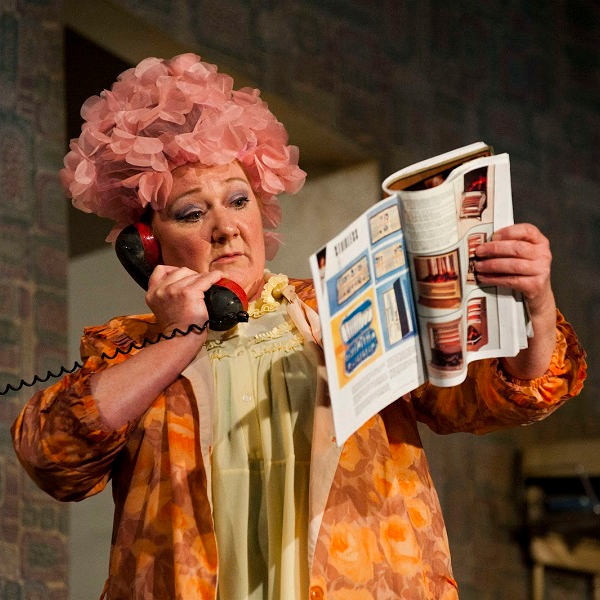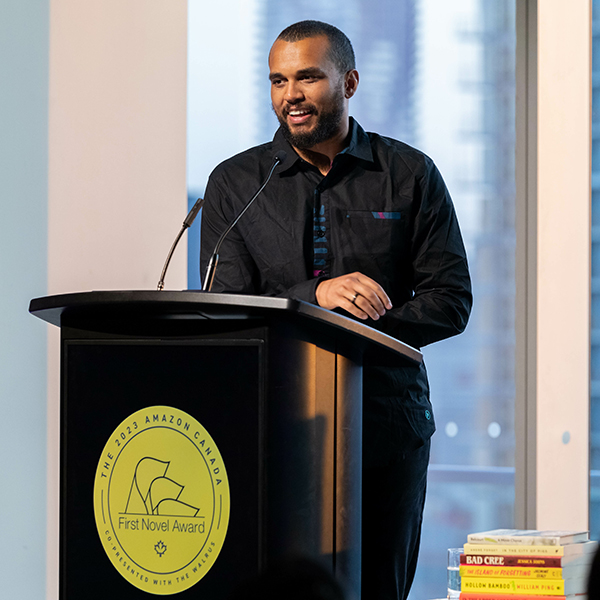Back in the nineties, when Ethan Sacks and Mariko Tamaki were both pursuing arts degrees at McGill, neither could have guessed that they would one day be putting words into the mouths of superheroes.
Sacks, BA’94, is writing the 12-issue mini-series Old Man Hawkeye for Marvel. It’s a prequel to the popular Old Man Logan series set in the wastelands of a dystopian United States. The Avengers archer, one of the few superheroes left alive after a devastating attack by an army of supervillains, embarks on a quest of vengeance in the series.
Tamaki, BA’98, recently completed a run on Marvel’s She-Hulk and has been writing the mini-series Supergirl: Being Super for DC. On the horizon is X-23, a new series for Marvel about the young Wolverine clone Laura Kinney.
After graduating from McGill, Sacks ended up back in his hometown of New York City, where he got a job as a rookie journalist at the New York Daily News.
Despite his life-long love of comics, Sacks says he never saw writing for the medium as a viable career choice.
“Journalism was my passion at McGill,” says Sacks, who wrote a humour-meets-politics column for The McGill Tribune student newspaper. “It never occurred to me that writing a comic book could be an actual job. It was something that Keebler Elves did inside a hollow tree.”
Comics didn’t figure in Tamaki’s career plans either when she was an undergraduate.
“I was mostly focused on graduating,” she says. “I had no clue what would be on the other side.”
Tamaki, who majored in English literature, says she was more a “Can-Lit person” and only became a hard-core fan of comics when she started collaborating on graphic novels.
Her graphic novels Skim, published in 2008, and 2014’s This One Summer – both illustrated by her cousin, Jillian Tamaki – earned critical raves for their nuanced, sensitive portrayal of the lives of girls.
Skim won an Ignatz Award, a Joe Shuster Award and a Doug Wright Award, while This One Summer earned an Eisner Award, an Ignatz Award and the Governor General’s Award for young people’s literature (illustrated books).
This One Summer became the first graphic novel to win a Caldecott Honor from the American Library Association (ALA). It was also named the ALA’s most “challenged” book of 2016, meaning the book most subjected to removal and censorship attempts. According to the ALA, the book was “challenged because it includes LGBT characters, drug use and profanity, and it was considered sexually explicit with mature themes.”
All that attention attracted the notice of the big-name comics companies. DC reached out to Tamaki with an offer to write the Supergirl series. Marvel’s invitation to take on She-Hulk soon followed.

Image: DC Comics
Sacks’ arrival on Marvel’s radar was a bit more projected, shall we say.
As a writer at the Daily News , the self-declared nerd says he made the most of his position to explore his love of Star Wars movies and comic books, both of which became part of his regular beat.
“That’s where I started to make the contacts and know a lot of people in the business,” he says.
In 2002, he interviewed Marvel’s now chief creative officer Joe Quesada, and the two eventually became friends.
Years later, Sacks was at a Mets game with Quesada and asked him if he would read a script for a Star Wars comic book idea that Sacks wrote. “He told me later he was pretty sure it was going to suck,” Sacks says, but the Marvel CCO ended up loving it.
Sacks’ name started circulating among Marvel editors and in mid-July 2016 he was invited to pitch for the Old Man Hawkeye series.
With only two weeks to get it in, Sacks bought up all the old Hawkeye comics he could find and channeled his love of movies (particularly Quentin Tarantino’s Kill Bill) for parts of the plot.
His experience reading comic book scripts as a reporter covering the industry also came in handy, helping him to turn in a fully formed and ultimately winning pitch.
Now, with five issues out, Marvel is calling Sacks a “rising-star writer” and Comicsverse.com has called Old Man Hawkeye “one of 2018’s greatest comics.”
Sacks says the future is looking good, but it’s early days yet.
“The jury’s out if this is going to be a full career for me. This could be a mid-life crisis more than a career change,” he says. Maybe so, but he already has his next Marvel assignment – a story about the space-faring Silver Surfer’s past, which will be published in September.
In her mainstream comics work, Tamaki continues to address some of the themes that were central to her groundbreaking earlier works, including depression (in She-Hulk) and the challenges of growing up (in her Supergirl series).
A collected edition of Supergirl: Being Super recently became available in bookstores. Paste magazine says Tamaki’s story “delivers a heartfelt, modern take on [Supergirl’s] early years on Earth that’s heartbreaking and endearing all at once.”
In her approach to characters like Supergirl, Tamaki mines what she’s referred to as “the human element of being superhuman.” But she knows there are limits to what she can do with these superheroes.
“Writing for Marvel and DC, or any existing character, means writing for someone else, and writing someone else’s characters. You know, for that period of time, you’re responsible for those characters, which I take very seriously.”
That sentiment is echoed by Sacks when he’s asked if he can envision Old Man Hawkeye among the Marvel movies that are now smashing box office records (he doesn’t think so, but the notion that two films about Deadpool would earn a combined $1.3 billion would have seemed awfully far-fetched not too long ago).
“These aren’t my characters,” says Sacks. “I’m playing with them in the sandbox, but at the end of the day I have to put them back in the toy box.”


